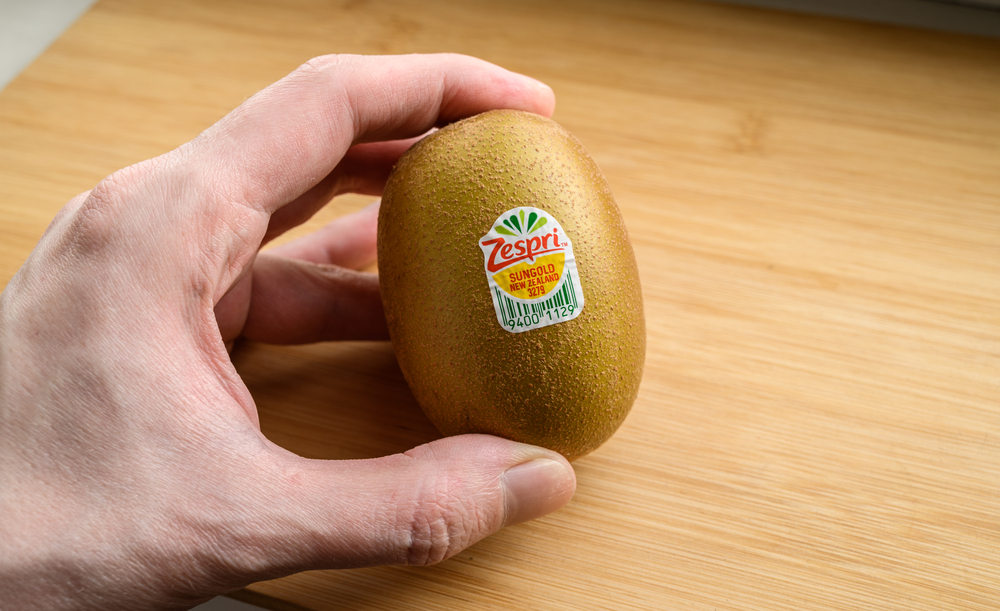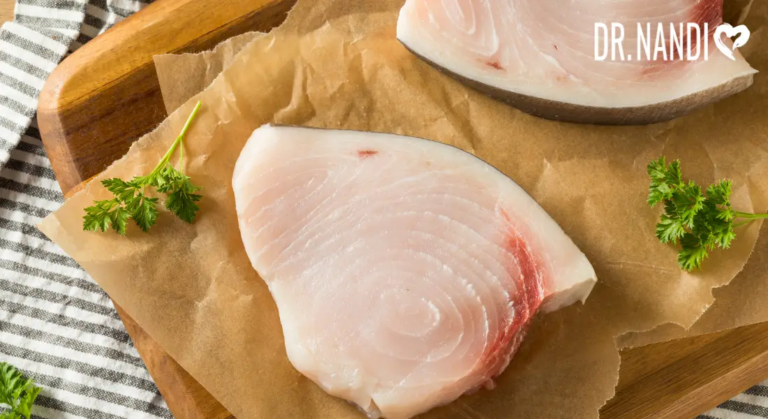Have you ever wondered about those small labels on fruit you buy at the grocery store? While they might seem like mere nuisances, these tiny stickers actually contain essential information that can impact your health and shopping choices.
Known as Price Look-Up (PLU) codes, these labels are more than just simple identifiers for the cashier. They offer insights into how the produce was grown, whether it involves conventional methods, organic practices, or genetic modification. By learning to interpret these PLU codes, you can make more informed decisions about the food you consume, ensuring that your choices align with your health and ethical standards.
What Are PLU Codes: Labels on Produce to Watch Out For
PLU codes, or Price Look-Up codes, are simple yet informative labels on fruit and vegetables that provide valuable details at a glance. These codes are primarily used by stores to streamline the check-out process, but they also serve a more significant purpose for consumers. Each sticker carries a numeric code that helps you understand not just the type of produce, but how it was cultivated.
How Can PLU Codes Inform Us?
The sequence and numbers within PLU codes are far from random; they are carefully assigned to give insights into the growing practices used to raise the produce you’re considering. Here’s how you can use these codes to learn about your food:
- Conventional Growing Practices: If the PLU code consists of only four digits, it indicates that the produce was grown conventionally. This method typically involves the use of synthetic pesticides and fertilizers. For example, a conventionally grown apple might be labeled with the code 4017.
- Genetically Modified Organisms (GMOs): A five-digit PLU code that starts with the number 8 signifies that the produce has been genetically modified. The GMO code on fruit tells you that the genetic structure of the plant has been altered in a laboratory to enhance certain traits like size, yield, or pest resistance. For instance, a genetically modified corn might bear the code 84011.
- Organic Farming Practices: Similarly, if the PLU code starts with a 9 and is followed by four additional digits, this indicates that the produce is organically grown. Organic produce is raised without synthetic pesticides, fertilizers, or genetically modified seeds. An organic banana, for example, would carry the code 94011. [1]

Why Knowing These Distinctions Matters
For those committed to a healthy lifestyle, understanding these codes is crucial. Knowing whether your fruit is conventionally grown, genetically modified, or organic can help you make decisions that align with your health and environmental values. This knowledge empowers you to minimize your exposure to synthetic chemicals and genetically altered products, which can have different nutritional profiles and potential health impacts compared to their organic counterparts.
Choosing organically grown produce, identified by a PLU code starting with “9,” ensures that you are consuming foods free from synthetic pesticides and fertilizers, which are often preferred for a clean diet. Conversely, understanding when produce is genetically modified, indicated by a “8” starting the code, allows you to make informed choices about consuming products that have been scientifically altered.
By familiarizing yourself with these distinctions, you can shop smarter and more selectively, tailoring your grocery choices to better fit your personal and family health goals.
Impact of Growing Practices on Health
The methods used to grow our food not only affect the environment but also have a direct impact on the nutritional value and safety of the produce we consume. Understanding the differences between organic and conventional farming practices is crucial for making informed health decisions.
- Organic Produce: Studies suggest that organic fruits and vegetables can have higher levels of certain nutrients, including antioxidants and vitamins. Organic farming avoids the use of synthetic pesticides and fertilizers, which some research suggests may contribute to higher nutrient densities in the resulting produce. This is because plants grown organically may generate more natural compounds, such as antioxidants, to defend themselves against pests and diseases. [2]
- Conventional Produce: While conventionally grown fruits and vegetables provide essential nutrients, the use of chemical pesticides and fertilizers in conventional farming can impact the natural growth processes of these plants. Some studies indicate that conventional produce may have lower amounts of certain vitamins and minerals compared to their organic counterparts. [3]
- Chemical Residues: Conventional farming often relies on synthetic chemicals to protect crops from pests and diseases, which can lead to residues on and in the produce. These pesticide residues are a concern for many consumers due to their potential health impacts, including risks to children’s development and health issues in adults such as hormonal disruptions and increased risk of certain cancers.
- Absorption of Chemicals: Different fruits and vegetables absorb and retain chemicals at different rates. Leafy greens and soft-skinned fruits, for example, are more likely to absorb higher levels of pesticides. This absorption can affect not just the safety but also the taste and quality of the produce.
The Case for Organic Farming
Choosing organic produce is a proactive way to reduce exposure to harmful chemicals. Organic standards prohibit the use of artificial chemicals, genetically modified organisms (GMOs), and require specific sustainable farming practices that maintain or enhance soil and water quality, thereby promoting a healthier and safer food product.
The choice between organic and conventional produce involves nutritional content and contaminant exposure considerations. By opting for organic, consumers can avoid chemical residues commonly found in conventionally grown foods, potentially reducing their risk of certain health issues while supporting sustainable farming practices.

The Clean 15 and Dirty Dozen
Making informed choices about produce, especially when considering pesticide exposure, can be significantly simplified by referencing the Environmental Working Group’s (EWG) lists of the Clean 15 and Dirty Dozen. These lists categorize fruits and vegetables based on their likelihood of pesticide contamination, helping consumers decide when it might be more beneficial to choose organic.
Clean 15: Least Likely to Hold Pesticide Residues
The Clean 15 list identifies the produce least likely to have pesticide residues, making them safer choices when buying conventional. [4]
Here are the fruits and vegetables making up this list:
- Avocados
- Sweet Corn
- Pineapples
- Cabbages
- Onions
- Sweet Peas (Frozen)
- Papayas
- Asparagus
- Mangoes
- Eggplants
- Honeydew Melons
- Kiwis
- Cantaloupes
- Cauliflower
- Broccoli
Dirty Dozen: Most Likely to Have High Levels of Pesticides
Conversely, the Dirty Dozen list includes produce that typically carries higher levels of pesticide residues. [5]
These are the fruits and vegetables where organic options might be a healthier choice:
- Strawberries
- Spinach
- Nectarines
- Apples
- Grapes
- Peaches
- Cherries
- Pears
- Tomatoes
- Celery
- Potatoes
- Sweet Bell Peppers
How These Lists Can Guide Organic Purchases
These lists serve as a practical tool for prioritizing organic purchases. For budget-conscious consumers who might not afford to buy all organic produce, focusing on the Dirty Dozen can be an effective strategy to reduce exposure to harmful pesticides. By choosing organic options for these high-residue foods, consumers can significantly decrease their overall intake of pesticides.
Meanwhile, the Clean 15 offers a reassuring list of fruits and vegetables that are typically safe to purchase as conventional due to their low pesticide levels. This not only helps manage grocery spending but also allows consumers to enjoy a variety of produce without significant pesticide exposure.
By using the Clean 15 and Dirty Dozen lists, shoppers can navigate the produce aisle with more confidence, making choices that align better with their health goals and budget.
My Personal RX on Choosing Organically Grown Foods Over GMOs
As a doctor committed to promoting healthy lifestyles, I strongly recommend prioritizing organically grown foods over GMOs. Organically grown produce not only minimizes your exposure to harmful pesticides and genetically modified organisms but also supports sustainable farming practices that benefit our environment. Here are some tips to help you integrate more organic foods into your diet, while also exploring other beneficial products:
- Start Small: If switching entirely to organic seems overwhelming, begin by replacing items from the Dirty Dozen list with their organic counterparts.
- Read Labels Carefully: Always check the PLU codes on produce to ensure you’re choosing organic options, particularly those that start with “9”.
- Incorporate Super Greens: Add a powdered supplement like my Super Greens to your daily routine to ensure you’re getting the benefits of full-spectrum superfoods, even on your busiest days.
- Explore New Recipes: Use my Superfoods Cookbook to find new and exciting ways to incorporate superfoods into your meals. It’s a fun way to enhance your diet with nutrient-rich foods.
- Plan Your Meals: Meal planning can help you make more organic choices by allowing you to think ahead and buy in bulk, which is often cheaper.
- Visit Local Farmers’ Markets: Local markets are a great source for organic produce and often offer the freshest options.
- Grow Your Own: Start a small garden with herbs and easy-to-grow vegetables like tomatoes and bell peppers. It’s a rewarding way to ensure you know exactly how your food is grown.
- Educate Yourself on Seasonal Produce: Buying organic produce in season not only saves money but also means you’re getting fruits and vegetables at their peak nutritional value.
- Look for Organic Deals and Discounts: Keep an eye out for sales on organic products at your local grocery store or online.
- Teach Your Family About the Benefits: Educating your family on the benefits of eating organically can make it easier to make healthier choices together.
By following these tips, you can significantly enhance the quality of the foods you consume, contributing positively to both your health and the environment.
Sources:
- What do PLU codes say about your produce? – Consumer Reports. (n.d.). https://www.consumerreports.org/cro/news/2010/05/what-do-plu-codes-say-about-your-produce/index.htm
- Organic foods contain higher levels of certain nutrients, lower levels of pesticides, and may provide health benefits for the consumer. (2010, April 1). PubMed. https://pubmed.ncbi.nlm.nih.gov/20359265/
- Vigar, V., Myers, S. P., Oliver, C., Arellano, J. M., Robinson, S., & Leifert, C. (2019). A Systematic review of organic versus conventional food consumption: Is there a measurable benefit on human health? Nutrients, 12(1), 7. https://doi.org/10.3390/nu12010007
- Environmental Working Group. (n.d.). #CleanFifteen Conventional Produce with the Least Pesticides – @EWG’s Shopper’s Guide to Pesticides in ProduceTM. https://www.ewg.org/foodnews/clean-fifteen.php
- Environmental Working Group. (n.d.). #DirtyDozen Fruits and Vegetables with the Most Pesticides – @EWG’s Shopper’s Guide to Pesticides in ProduceTM. https://www.ewg.org/foodnews/dirty-dozen.php




















